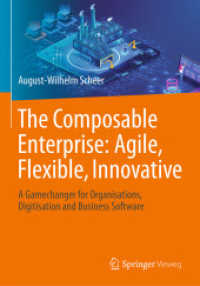Full Description
How to reckon with no-confidence votes and rebuild trust in higher ed leadership.
Faculty votes of no confidence in college presidents have become a defining feature of leadership turmoil in American higher education. Often dismissed as merely symbolic, these votes can nonetheless mark a turning point in campus governance—and frequently signal the end of a presidency. In No Confidence, Michael T. Nietzel and Charles M. Ambrose present the first comprehensive analysis of this dramatic and increasingly visible phenomenon.
This book examines the origins, causes, and consequences of no-confidence votes, placing them in the wider context of higher education's evolving governance structures. Nietzel and Ambrose explain why these votes have increased in frequency, especially in the wake of financial crises, political pressures, and a rapidly shifting academic workforce. What happens after such votes are cast—who resigns, who survives, and what do these outcomes mean for the institutions involved? Through detailed case studies and critical insights, No Confidence reveals how diminishing shared governance, declining faculty influence, and rising tensions between academic and corporate management styles have created fertile ground for conflict.
To prevent and repair campus conflict, Nietzel and Ambrose recommend focusing on improving trust, transparency, and collaboration among presidents, governing boards, and faculty. These essential actions, they argue, can help maintain institutional stability in an increasingly volatile higher education landscape.
Contents
Table of Contents
Acknowledgements
Preface: No Confidence Votes: The Slings of Arrows and Academia
1. No-Confidence Votes From Parliament To Campus
2. Why and How No-Confidence Votes are Conducted
3. No-Confidence Votes and Financial Crises
4. No-Confidence Votes and Shared Governance
5. No-Confidence Votes: Fatal or Feeble
6. A Better Way
Appendix








